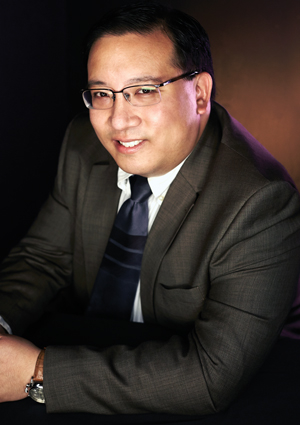Legal innovation summit attendees are long on ideas but short in data

Photo of Victor Li by Saverio Truglia
Sunday’s marathon session at the National Summit on Innovation in Legal Services at Stanford University really hammered home a lot of points for me. For instance, the number of litigants forced to go pro se is shockingly high when it comes to family, immigration and housing court. I also learned that Professor Andrew Perlman’s example of automated online dispute resolution that he talked about at ABA Techshow a couple of weeks ago is a lot further along than I thought. On one end of the spectrum, the available work for lawyers is dwindling, but on the other end, there’s never been more demand than there is now.
The biggest takeaway for me, however, is that lawyers and non-legal professionals (apparently, they hate the term “nonlawyers”) have radically different thought processes when it comes to solving a problem. Take Tom Ortega II, a computer programmer-turned-legal-hacker and founder of Omega Ortega. (Ortega won the ABA Journal’s Hackcess to Justice New Orleans legal hackathon in March). On several occasions throughout the summit, he gave the various speakers on stage some variation of the following request: “Tell us exactly what the problems are so we can fix them.”
For lawyers, however, that’s easier said than done. That’s especially true if even they aren’t exactly sure how to state the problem.
The summit, sponsored by the ABA Presidential Commission on the Future of Legal Services and the Stanford University School of Law, wound down on Monday with a panoply of speakers from within and outside the legal profession giving advice and calling for innovation. During Sunday’s session, summit attendees broke into smaller groups to come up with reforms and proposals designed to help fix the access to justice gap. On Monday, Renee Knake, professor of legal ethics at Michigan State University College of Law and the reporter for the commission, unveiled a laundry list of suggestions from the breakout sessions that included calls to permanently alter the law school model, establish the right to counsel in civil cases (“civil Gideon”) and allow non-lawyer ownership of law firms.
There was more reaction and reflection from several key summit attendees at the close of the three-day program.
“Lawyers don’t have a monopoly on knowledge, information or capital, and they have to stop acting like they do,” said Deborah Rhode, professor at Stanford law school. “We must open up the regulatory process and change the rules that prevent effective collaboration across disciplines.”
Rhode, however, cautioned that certain reform efforts, such as those involving non-lawyer ownership, were facing a steep, uphill battle. “There’s economic self-interest at play,” said Rhode. “We cannot underestimate the political obstacles that stand in the way.”
Other ideas were more tech-oriented. “Every state should have a single legal help portal where you can post a legal question and be directed to potential answers,” said Lisa Foster, director of the Access to Justice Initiative at the U.S. Department of Justice. “It’s feasible, we just haven’t done it.” Some other proposed technological initiatives included a few in the dispute resolution/litigation field such as use of multilanguage online forms; digitized documents at creation; greater reliance on online dispute resolution such as MODRIA; and wider use of courthouse kiosks.
At least one summit speaker plans on doing something about the lack of an online portal. Margaret Hagan, a fellow at Stanford Law’s Center on the Legal Profession and a lecturer at Stanford’s Institute of Design (as well as being a Legal Rebel), told Law Scribbler that she was in the process of designing such a portal. “Right now, I’m just writing an ‘envisionment paper’ to set out the design process—setting out user requirements, scouting good models, and thinking about data availability/integration,” Hagan said in an email. “This was one of my main takeaways from the conference—the need (echoed from courts, legal aid groups, and observers) for centralized, branded, accessible legal portals. I’m putting it at the top of my own design-project agenda to help tackle this need.”
While talking about technology, ABA President William C. Hubbard addressed the lack of data available. “We don’t have the data or the metrics to see which programs really move the needle when it comes to access to justice,” said Hubbard. Foster concurred, noting that the Access to Justice Initiative “doesn’t have much data” at its disposal.
Talk of the dearth of data wasn’t limited to Monday’s session. During her Sunday evening speech, Sherrilyn Ifill, president and director-counsel of the NAACP Legal Defense and Educational Fund, proposed using technology to keep track of police officer conduct and behavior. She suggested that was a good way to weed out bad cops. “I believe most officers are good, but bad officers are ruining it for everyone,” said Ifill. “We need data to tell us who the problem officers are.”
In the meantime, it is incumbent on lawyers to use the technology that’s already at their disposal. James J. Sandman, president of Legal Services Corporation, and featured speaker Richard Barton, founder of Expedia, Zillow and Glassdoor, pointed out that a vast majority of people living beneath the poverty line have smartphones. The speakers encouraged lawyers to do a better job using smartphones to advertise and provide legal help. In an interview, Barton noted that even though most lawyers have a smartphone, they weren’t using them to the best of their ability.
“It’s my guess that, given the way communications are happening and documents are being trafficked, lawyers should be moving towards data rooms that are accessible by smartphone,” says Barton, explaining that a data room is a place where all documents relating to a transaction (like for a house closing) live in digital format and can be reviewed, commented on and signed from a smartphone. “I bet it’s not happening. I still get PDF documents circulated in onesies and twosies. That needs to change.”
Almost as frequent as Ortegas’ requests was the metaphor of a train about to leave the station. Barton, who was interviewed on stage by Hubbard, invoked the train during his speech as he argued that lawyers could either get on or get out of the way.
.@WilliamCHubbard and @Rich_Barton kick off this morning's #abafutures sessions (#seattle #represent) pic.twitter.com/wu2S6V13OB
— Dan Lear (@rightbrainlaw) May 4, 2015Hubbard asked Barton if he had a positive message for lawyers. Barton answered with two words, challenge and opportunity.
“You can say the train is leaving the station with or without us,” said Barton. But there is opportunity. The opportunity is one of hope, of finding new ways to deliver the services we’re trained to do.
“The opportunity is there to expand the market,” he said. “Aren’t we the least bit curious to learn new ways to deliver the service we are trained to do?”
Also see:
Law Scribbler: “True innovation in the legal industry requires outside views and thinking, summit speakers say”
Law Scribbler: “Summit on legal innovation in legal services gets underway in Silicon Valley”
Crowdsourced coverage via Storify: National Summit on Innovation of Legal Services



